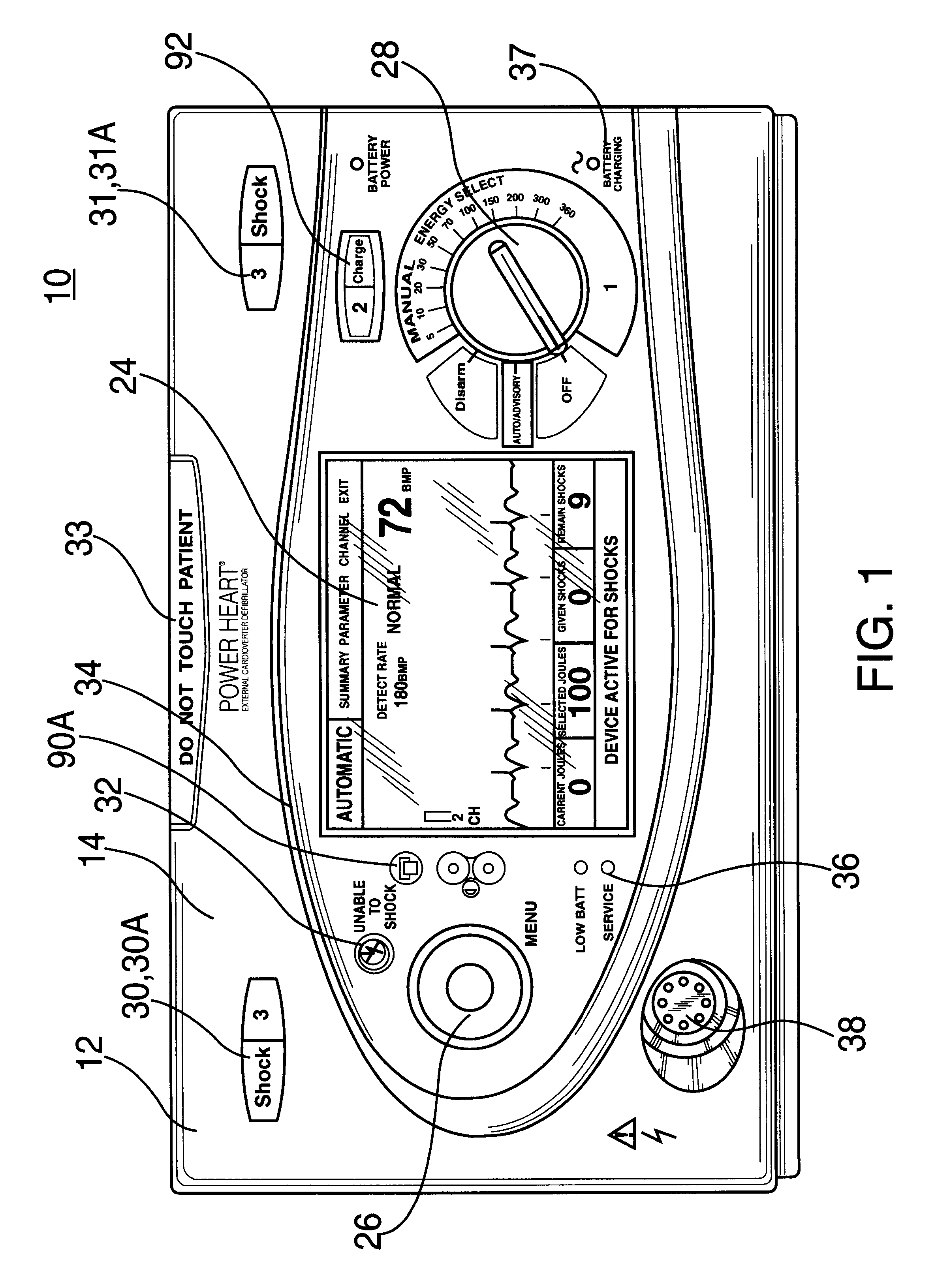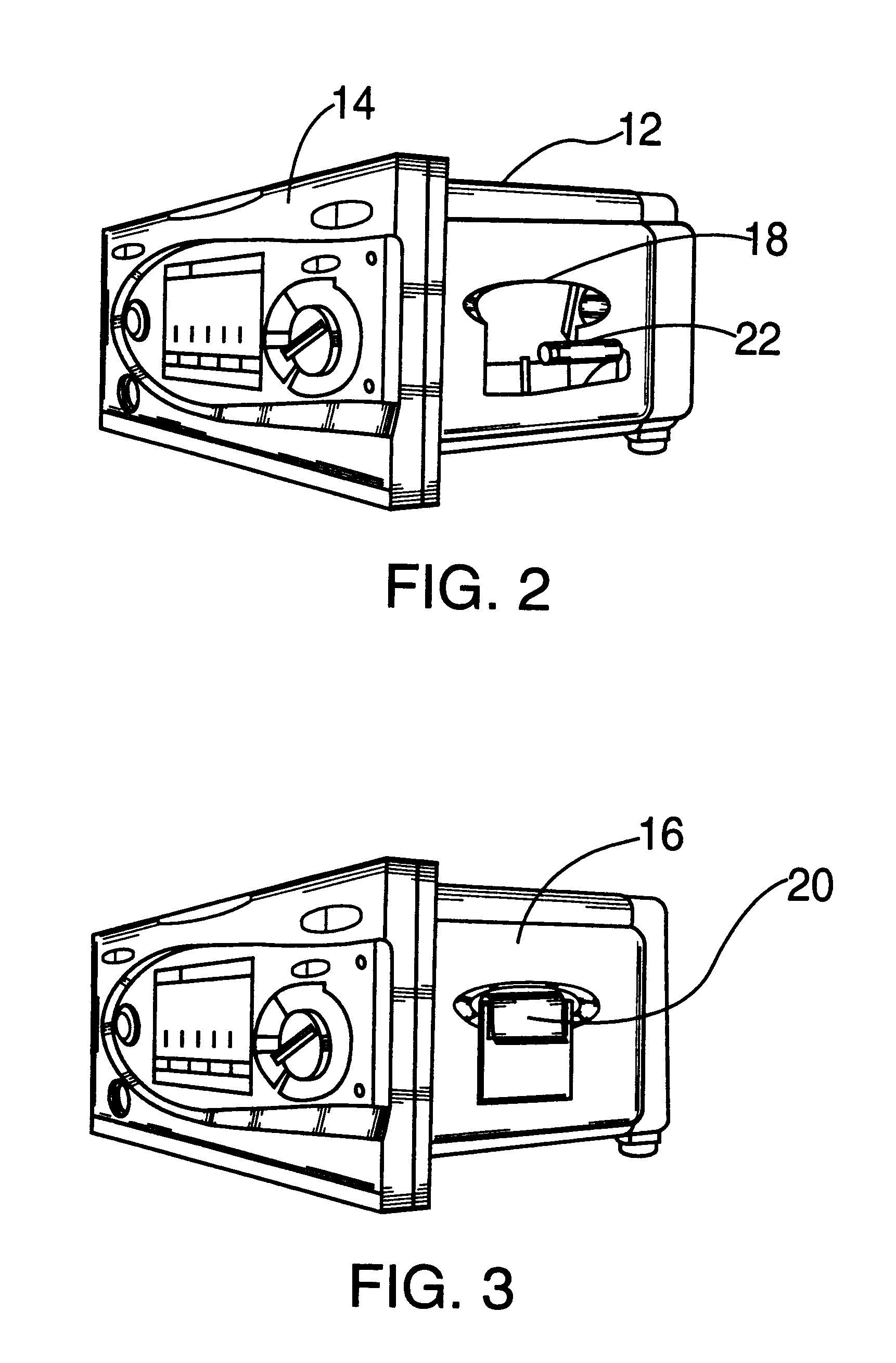Automatic external cardioverter/defibrillator with tachyarrhythmia detector using a modulation (amplitude and frequency) domain function
a technology of tachyarrhythmia and defibrillator, which is applied in the field of automatic external cardioverter/defibrillator with tachyarrhythmia detector using a modulation domain function, can solve the problems of insufficient algorithms, inability to detect vf, and inherently time-consuming steps, so as to reduce the probability of delivering therapy, reduce the probability of svt event, and increase the probability of shock
- Summary
- Abstract
- Description
- Claims
- Application Information
AI Technical Summary
Benefits of technology
Problems solved by technology
Method used
Image
Examples
Embodiment Construction
FIG. 1 shows a defibrillator 10 having a housing 12 with a front face 14 on which a plurality of controls and indicating elements are provided, as described in more detail below. The defibrillator further includes electrode assembly shown in FIG. 4 and described in detail below. As seen in FIGS. 2 and 3, one side 16 of the housing 12 is provided with a cavity 18. A printer (not shown) is mounted in cavity 18. A roll of paper 20 is mounted on shaft 22 in a manner which allows the printer to print alphanumeric characters and graphics on paper 20.
The housing 12 can be positioned on a rack, or other support means so that it can be disposed adjacent to the patient.
Referring back to FIG. 1, a screen display 24 is mounted on the front face 14 so that it is clearly visible. The display is used to provide information to the clinician related to the operation of the defibrillator 10, the status of the patient, etc. Disposed around the display 24, there are other indicator and control elements...
PUM
 Login to View More
Login to View More Abstract
Description
Claims
Application Information
 Login to View More
Login to View More - R&D
- Intellectual Property
- Life Sciences
- Materials
- Tech Scout
- Unparalleled Data Quality
- Higher Quality Content
- 60% Fewer Hallucinations
Browse by: Latest US Patents, China's latest patents, Technical Efficacy Thesaurus, Application Domain, Technology Topic, Popular Technical Reports.
© 2025 PatSnap. All rights reserved.Legal|Privacy policy|Modern Slavery Act Transparency Statement|Sitemap|About US| Contact US: help@patsnap.com



